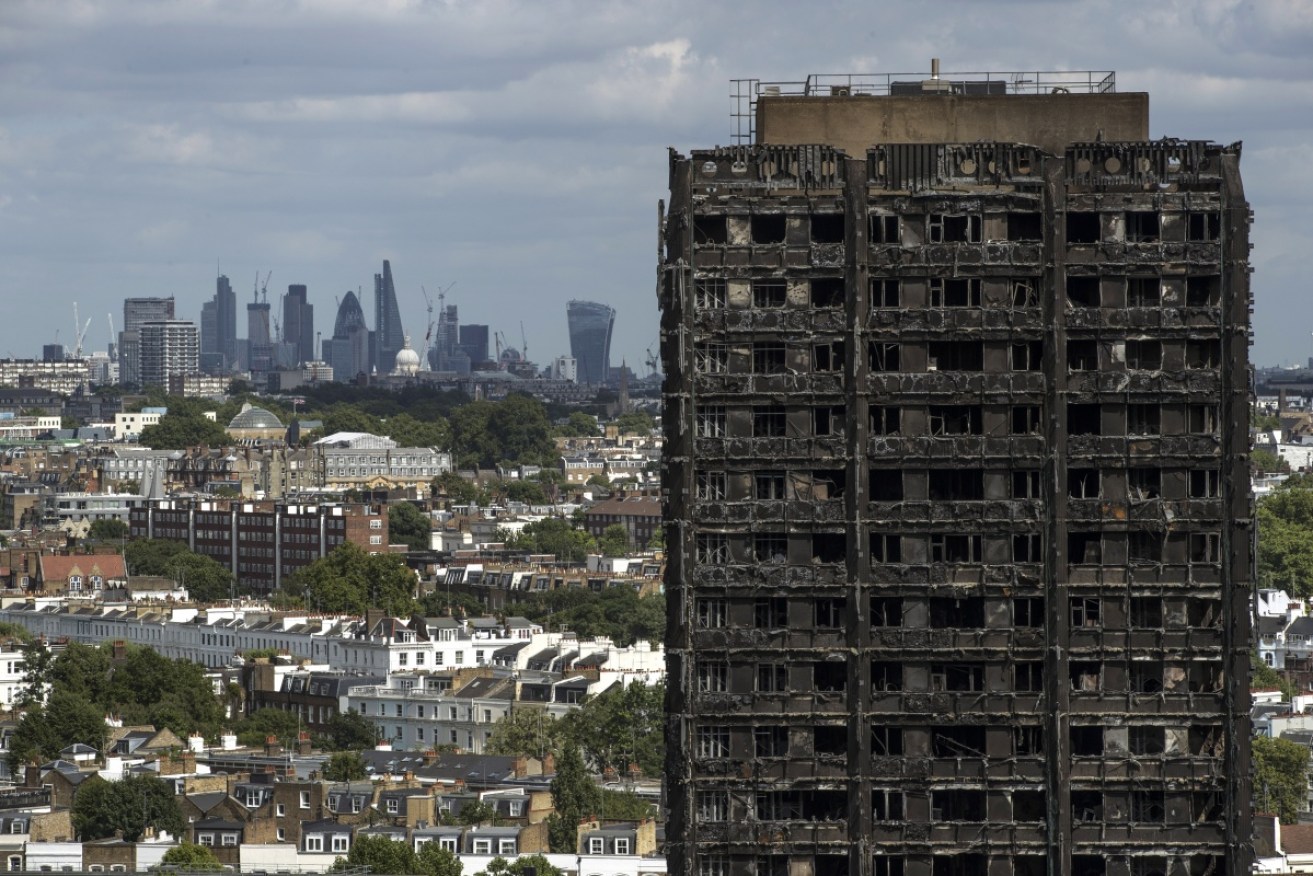Avoiding another Grenfell: Experts sound the alarm on fire safety


London's Grenfell Tower was ravaged by a deadly fire, prompting worldwide debate about combustible cladding. Photo: Getty
In London, a charred husk of a building still stands as a grim reminder of the deadly fire that ripped through Grenfell Tower last June.
The tragedy resulted in 72 deaths, and ignited worldwide debate about the safety of combustible aluminium cladding that adorns many high-rise buildings.
Three years earlier, fatalities were narrowly avoided when the LaCrosse apartment building in Melbourne’s Docklands — also lined with flammable cladding — caught alight.
According to evacuation expert Bruce Bromley, something as simple as a change in wind direction could have resulted in scores of deaths in Melbourne that day.
“A few more sprinkler heads activated, a different time of day, a different wind, the system would have been overrun and we could easily have had our own Grenfell,” he said.
“The wind blew the smoke and flames away from the building, and we got lucky in terms of the low water demand in the surrounding area at the time as the number of sprinklers that operated exceeded the design capacity.”
Mr Bromley believes construction companies are still putting profits ahead of public safety, and says state and federal governments aren’t doing enough to keep people safe.
“The government needs to step in and make removal and replacement [of combustible cladding] mandatory,” he said.
Mr Bromley is also calling on developers to introduce smoke masks in residential buildings at risk of fire.
“Smoke inhalation is the No.1 killer in a fire situation. Toxic smoke kills faster than fire,” he said.
Australia’s fire safety regulations for buildings are governed by a national code, but administered on a state and territory basis. A number of state taskforces have been set up to address the issue of flammable aluminium cladding.
The Victorian Cladding Taskforce identified 1369 buildings that have potentially dangerous cladding, while Queensland’s taskforce found as many as 12,000.
In New South Wales, an audit of nearly 200,000 high-rise buildings found aluminium cladding in approximately 1000 properties.
Many industry bodies are calling for a national fire safety commission to be established.
“The tragic Grenfell fire in London last year has forced a review of processes globally. In the UK, a review by Dame Judith Hackitt found shortcomings in compliance and enforcement processes that can only be addressed with a nationally consistent approach,” Fire Protection Association Australia general manager Matthew Wright said.
“The core challenges are very similar in Australia, as are the solutions.”
National Fire Industry Association CEO Wayne Smith describes the current state-based system as “fragmented”.
Australia needs a national fire safety commission to regulate service standards, maintenance, products, training, and installation practices “so that state borders don’t exist and we have a central regulatory authority”, he said.
For as long as cities have existed so have fire hazards, leading fire safety engineer and Society of Fire Safety chair Jonathan Barnett said.
“We go through cycles and what happens is we have a big fire and create building regulations that control things like combustible facades, then we relax, we forget.”
The issue is not as simple as banning cladding, he said.
“The difficulty with modern materials is that they may be safe in one building but not another,” he said.
The solution is for qualified fire engineers to be fully involved in the building design and safety process from the ground up, he said.
“[Fire engineers] are often not involved in the design of a building, and we may not be told that there’s going to be combustible cladding on it,” Mr Barnett said.
“How do we engineer a problem when we don’t know about it?”
What to do if you think your building has combustible cladding
“Buildings with cladding are not necessarily dangerous. There are many factors that need to be taken into account, including existing fire safety systems, so each case needs to be carefully reviewed and assessed by experts,” Queensland’s Non-Conforming Building Products Audit Taskforce said.
The Victorian Building Authority provides the following advice on reducing fire risks:

Source: Victorian Building Authority
Residents concerned about cladding in their building can contact their owners’ corporation or rental manager, followed by the local council and fire service. Or contact one of the following organisations for guidance:
- Fire Protection Association Australia – phone 1300 731 922 – www.fpaa.com.au/provider
- National Fire Industry Association – phone (07) 3882 6924 – www.nfia.com.au
- Engineers Australia – phone 1300 653 113 www.engineersaustralia.org.au








